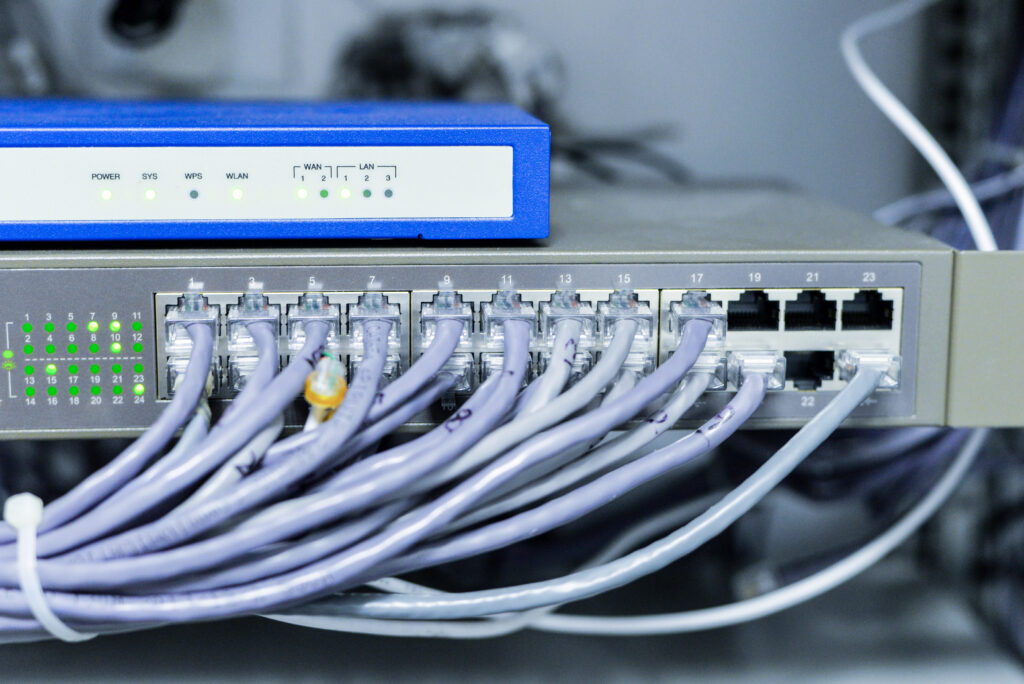A ransom message appears. Files are locked. Entire departments grind to a halt. The disruption, while devastating, isn’t the most concerning aspect. What’s more alarming is how easily the attack happened. Thanks to Ransomware as a Service (RaaS), these types of incidents can now be initiated by nearly anyone with internet access. Ransomware as a Service threats require proactive IT defense because the tools to launch devastating attacks are no longer exclusive to skilled cybercriminals—they’re rentable.
Ransomware as a Subscription Model
Cybercrime has adopted the same delivery model that transformed software businesses. RaaS functions much like Software as a Service (SaaS). The developers of the ransomware build the payload and infrastructure, while their affiliates—often low-level criminals—pay to use the service and carry out the attacks. These affiliates share the profits from any ransom paid.
This model thrives for several reasons:
- Accessibility: Affiliates don’t need advanced technical knowledge to launch effective campaigns.
- Scalability: A single group can enable hundreds of simultaneous attacks.
- Operational support: Many RaaS kits include instructions, dashboards, and even customer support for affiliates.
These developments explain the steep rise in ransomware frequency and complexity over the past three years.
A Wider, Faster, and More Profitable Threat
While sophisticated attacks on large corporations used to dominate headlines, RaaS has democratized cybercrime. Now, small and medium-sized businesses, local governments, and nonprofits are being hit with increasing frequency.
According to IBM Security’s X-Force, RaaS accounts for nearly two-thirds of all ransomware-related activity. The damage isn’t limited to one sector or geography. New variants are launched regularly, and because they’re often automated, they can spread within minutes once deployed.
This shift marks a significant change. Ransomware isn’t a rare, targeted tactic anymore. It’s part of a systematic, repeatable business model. Organizations that don’t evolve their defenses are far more likely to become victims.
Why Outdated Defenses Fall Short
Many businesses still rely on outdated protections like perimeter firewalls and traditional antivirus software. Unfortunately, these tools focus on known signatures and previously seen behavior. RaaS kits are specifically engineered to change rapidly and evade detection.
Instead of responding to alerts, businesses must focus on prevention and early detection. That means:
- Actively monitoring systems for abnormal behavior
- Implementing defense layers that can contain threats
- Involving users in security awareness and testing
Waiting for an alert isn’t a defense strategy. Modern attacks demand a forward-looking approach that anticipates how, when, and where threats might arise.
Endpoint Detection and Response: Identifying the Unseen
Modern EDR platforms are designed to detect suspicious activity rather than just block known threats. For example:
- A login occurs from Virginia at 9 a.m., then another from Romania ten minutes later—EDR detects that inconsistency.
- A user uploads 500MB of data to an unfamiliar IP—EDR triggers a response.
These tools monitor the digital heartbeat of your environment. They track normal behavior patterns and flag anything that deviates from them—critical in neutralizing evolving RaaS campaigns before encryption begins.
Zero Trust in Action
Zero Trust Architecture is more than a buzzword—it’s a mindset. It assumes that internal systems are just as vulnerable as external ones. With RaaS attackers often gaining access via stolen credentials, this approach is essential.
Core principles include:
- Least privilege access: Users and devices receive only the permissions they absolutely need.
- Continuous verification: Authentication doesn’t stop after login—it happens throughout the session.
- Segmentation: If one segment is compromised, the damage is contained.
According to the National Institute of Standards and Technology, organizations that adopt Zero Trust reduce the average cost and lifecycle of breaches.
The Patch Management Priority
Many organizations delay patching due to operational concerns, yet most successful ransomware attacks exploit known vulnerabilities with published fixes. This makes unpatched systems one of the most exploited entry points.
To address this risk:
- Use automated tools to roll out updates quickly
- Track patch prioritization using metrics like the CVSS scoring system
- Test updates in staging environments to reduce risk
Proactive patch management eliminates the low-hanging fruit that RaaS attackers rely on.
Email Still Leads the Way in Compromise
Despite the growth of new attack vectors, email remains the most common delivery system for ransomware. From fake invoices to seemingly benign attachments, phishing remains highly effective.
Strong defenses should include:
- AI-driven email filtering that evaluates context, sender history, and intent
- Phishing simulations that help train users to recognize evolving tactics
- Attachment isolation policies for high-risk file types
Email defenses must extend beyond just scanning for dangerous files. Human behavior, supported by technical safeguards, creates a more resilient frontline.
Plan for the Worst: Build a Real Incident Response Protocol
Too often, incident response exists only on paper until it’s needed. Then it’s outdated, untested, or incomplete.
A functional incident response plan includes:
- Role assignments: Who contacts law enforcement? Who leads recovery? Who notifies clients?
- Timelines and thresholds: When is an incident escalated to a breach?
- Playbooks: Documented steps for containment, recovery, and post-incident review.
Organizations with tested plans reduce downtime and data loss, and often avoid reputational fallout altogether.
Building an Effective Incident Response Plan
Time is the most valuable resource during a ransomware attack. Without a tested incident response plan, confusion can lead to delays and costly missteps.
A thorough response plan should include:
- Clear chain of command so staff know who to contact and when
- Step-by-step recovery workflows for both technical and communication teams
- Pre-authorization for specific containment actions
Organizations that test their response plans regularly recover faster and reduce data loss. More importantly, they protect their reputation and relationships with stakeholders.
Backups Must Be Hardened, Not Just Available
Too often, backups are assumed to be the answer to ransomware. However, attackers increasingly seek out and encrypt or delete backups first.
To make backups a reliable recovery option:
- Store at least one immutable or offline backup copy
- Regularly validate that backups are restorable and current
- Avoid connecting backups directly to primary systems or domains
If backups are compromised, your recovery options narrow drastically. Routine validation ensures that backups function as intended under stress.
Compliance Isn’t Enough—Security Must Be Practical
Regulations like HIPAA and GDPR create important baselines. However, compliance doesn’t guarantee protection. RaaS actors don’t care whether you passed an audit; they exploit operational weaknesses.
To go beyond compliance:
- Implement real-time monitoring systems
- Use frameworks like MITRE ATT&CK for threat mapping and defense planning
- Focus on incident resilience and business continuity
True protection involves daily decisions, not just annual checklists.
Ransomware Is Hitting Mid-Sized Targets
Recent data from Coveware shows a clear shift in target preference. Over 70% of ransomware incidents now affect businesses with fewer than 1,000 employees. These firms often lack dedicated cybersecurity staff, making them easier marks.
One incident involved a mid-size logistics firm. The attackers gained access through leaked credentials and used a RaaS payload to encrypt shared systems. Despite having backups, the company lost access for nearly a week. Recovery took longer because access controls weren’t properly segmented.
This wasn’t a case of bad luck—it was a preventable outcome based on insufficient preparation.
Security as a Competitive Advantage
Cybersecurity no longer lives solely in the IT department. It’s now a crucial part of business continuity and client trust.
Proactive organizations:
- Win more contracts by demonstrating resilience
- Attract risk-conscious partners and clients
- Respond faster and minimize losses when incidents occur
Clients increasingly ask about security practices during procurement. Being able to confidently explain your layered defenses and response planning can set you apart.
Final Thought: Rethink the Role of IT Security
Ransomware as a Service threats require proactive IT defense not only because attackers are becoming more resourceful but also because defenders can no longer rely on yesterday’s tools.
The cybercrime economy has adapted. Now, IT security must do the same. That means investing in preparation, not just reaction. It means designing infrastructure that assumes breach attempts will happen—and can absorb the impact when they do.
Most importantly, it means making security a board-level conversation, not just an IT line item.





